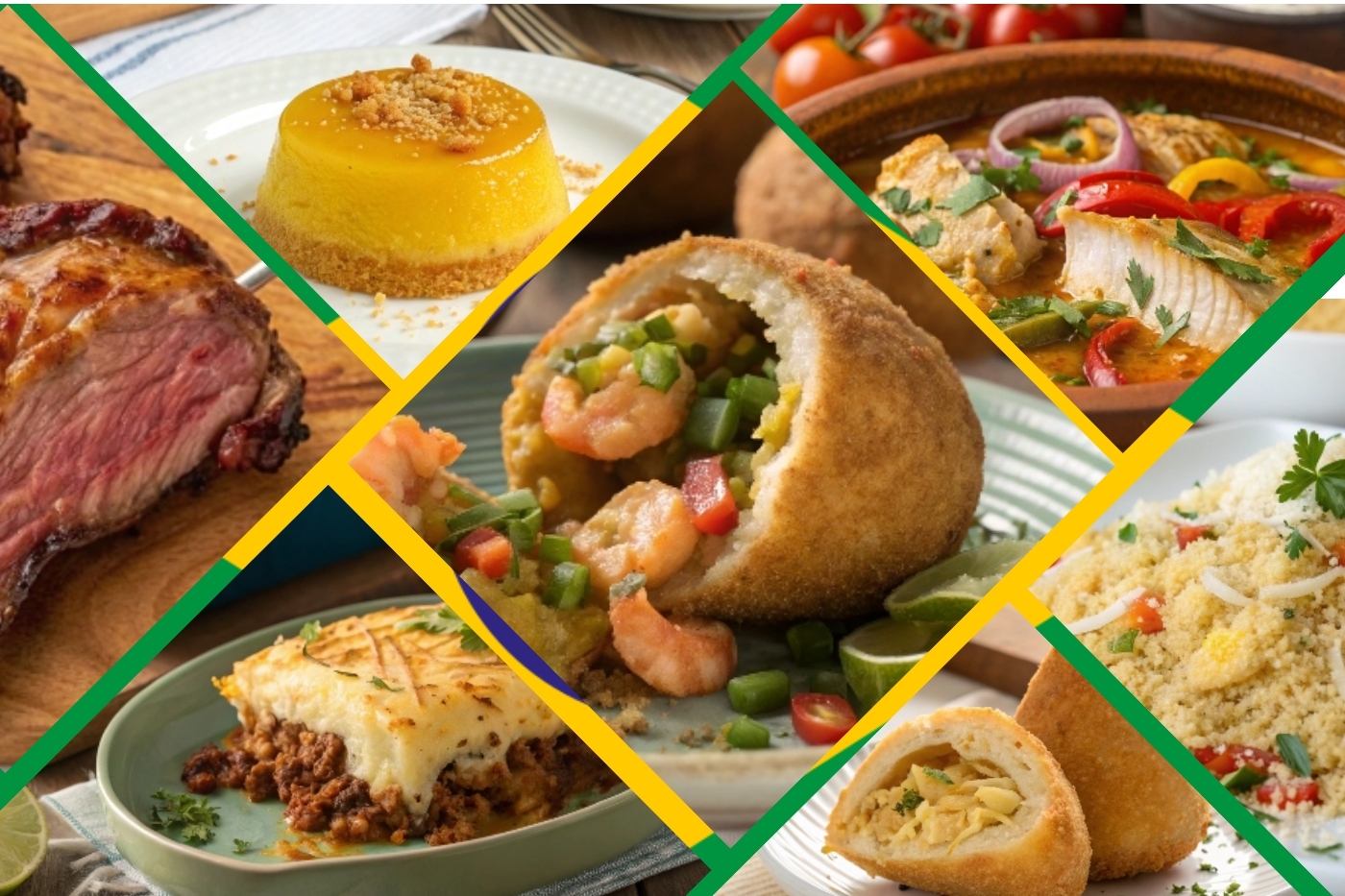Brazil’s culinary scene truly boasts a kaleidoscope of flavors, textures, and aromas. From bustling street carts perfuming the air with sizzling treats to cozy family kitchens simmering age-old stews, every region has its own gastronomic treasures. Vivid, hearty, and bursting with character, Brazilian cuisine entices explorers to embark on a culinary odyssey. Each dish holds a story—captivating tales of Indigenous roots, African influences, and European inspirations that converge to create an extraordinary tapestry of taste for the bold and curious.
Beneath the vibrant surface lies an irresistible invitation to discover the best brasilian food, each morsel echoing centuries of gastronomic evolution. You’ll encounter stews of succulent beans, sizzling cuts of meat, and tropical produce woven into hearty feasts—a testament to brazilian traditional food. Whether sampling an iconic street snack or savoring a lavish banquet, you’ll feel the heartbeat of a proud nation. Ultimately, these plates reflect the soul of a brazilian national dish, uniting communities through shared passion for nourishment.
Table of Contents
Feijoada – A Pot of Rich Comfort
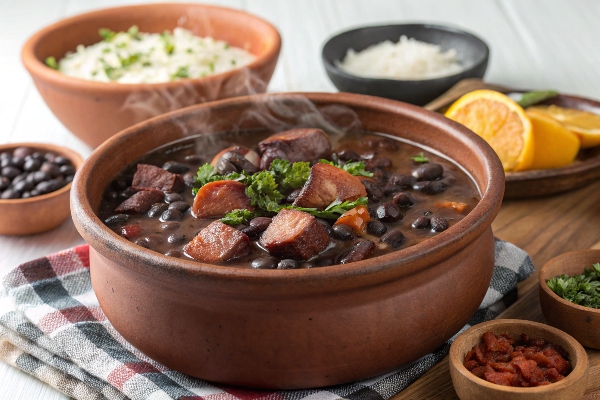
Biting into Feijoada for the first time felt like stumbling upon the best brasilian food I’d only dreamed about. The velvety black beans and smoky meats fused into one bite, awakening my senses with comforting warmth. This dish isn’t hearty—it carries the essence of brazilian traditional food shaped by centuries of culinary artistry. I realized why locals proudly call it a brazilian national dish. Indeed, Feijoada embodies the best brasilian food experience, reminding me of home-cooked love in every spoonful.
Cooked low and slow, Feijoada’s thick stew harmonizes rich bean gravy with succulent cuts of pork, beef, and sausage. A swirl of savory essence seeps into every morsel, saturating the palate with soul-soothing depth. Traditionally served with fluffy white rice, tangy collard greens, and a slice of orange for brightness, this comforting medley becomes a hug on a plate. With each spoonful, you feel a rush of nostalgia and communal bond, as though welcomed into a gathering of longtime friends.
Preparation, Ingredients, Steps
Feijoada ranges from moderate to challenging in preparation, depending on the variety of meats and cooking steps. Common ingredients include black beans, pork ribs, sausage, dried beef, onions, and garlic. To cook, soak and simmer beans, brown the meats, then merge everything in a single pot for a slow, unhurried braise. Each hearty serving runs about 700 calories. Traditional slow-cooking techniques amplify depth, though budget remains flexible—cheaper cuts work splendidly when given time to tenderize and meld into this comforting masterpiece.
Picanha – Succulent Juiciness on the Grill
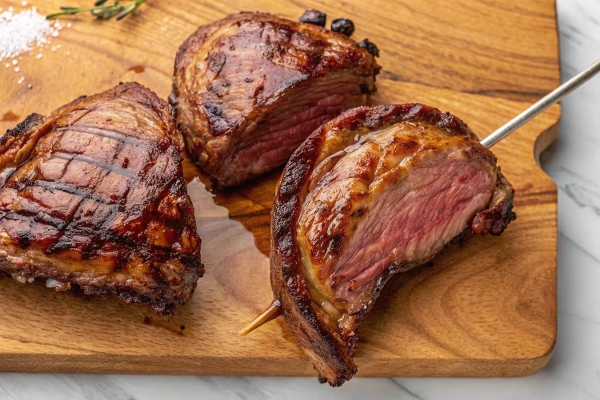
One bite of Picanha reminded me of the best brasilian food revelations that spark culinary euphoria. Its tender, juicy interior and seared crust encapsulates everything I crave in a premium steak, celebrating the essence of brazilian traditional food. I finally understood why many regard this grilled gem as a brazilian national dish, revered at backyard barbecues across the country. Overflowing with robust beef flavor, Picanha symbolizes the best brasilian food indulgence that ties friends and family together in smoky bliss.
Melt-in-your-mouth tenderness sets Picanha apart. Cut from the top sirloin with a thin cap of fat, it stays moist when grilled over open flames. That outer layer crackles into golden perfection while sealing succulent juices inside. When sliced, you see the luscious marbling glistening in each piece, a sure sign of indulgence. One whiff of its smoky aroma and you’re transported to a churrasco celebration. Each bite conjures an image of laughter, music, and the enchanting aroma of fire-kissed meats.
Preparation, Ingredients, Steps
Compared to other steak cuts, Picanha rates easy-to-moderate on the preparation scale—simply season with salt or a basic rub, then grill. Essential ingredients include the distinctive top sirloin cap with its fat layer intact. Briefly sear over high heat, then move to indirect heat until medium-rare, sealing in all those juices. Portions average about 400 calories per serving. Focus on quick, intense heat for a perfect crust, and keep budget in check by sourcing domestic top sirloin instead of pricier imports, ensuring a satisfying yet economical taste adventure.
Moqueca – Coastal Serenity in a Bowl
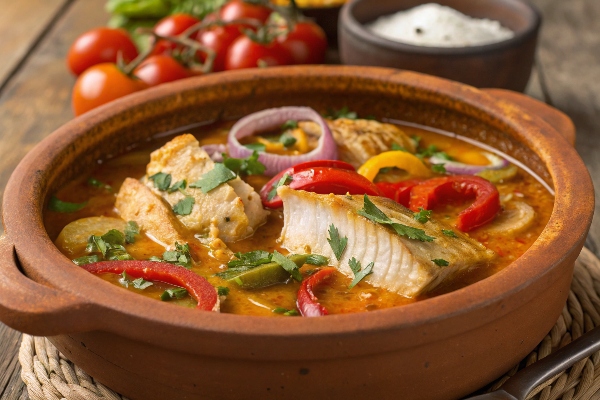
Experiencing Moqueca was a revelation in the best brasilian food realm, unveiling a delicate dance of seafood and creamy coconut essence. This enchanting stew resonates with the core of brazilian traditional food, whispering tales of coastal fishing communities. No wonder some hail it as a brazilian national dish, offering solace with every comforting spoonful. As I indulged, I understood how it mirrors the best brasilian food philosophy—fresh, communal, and brimming with vibrant flavors that honor the sea’s bounty in each velvety sip.
Bursting with the vivid colors of bell peppers, tomatoes, onions, and cilantro, Moqueca is a feast for the eyes before it even touches your lips. The gentle hiss as fish or shrimp simmers in coconut milk and dendê oil signals mealtime magic. A wave of briny sweetness interlocks with subtle tropical undertones, conjuring visions of sun-drenched beaches and gentle waves. Each spoonful feels rejuvenating, as though the ocean breeze has found a new form in this sumptuous, soothing cradle of flavors.
Preparation, Ingredients, Steps
Moqueca is moderate to prepare, mainly requiring fresh seafood, tomatoes, peppers, onions, coconut milk, and dendê (palm) oil. Start by seasoning the fish or shrimp, then sauté onions and peppers before blending in coconut milk. Let the flavors meld gently without heavy boiling, preserving the delicate seafood texture. Expect around 450 calories per serving. Gentle simmering ensures succulent results while layering tastes for a satisfying payoff. Budget can vary; using local, seasonal seafood helps keep costs manageable while delivering an authentic taste of Brazil’s coastal soul.
Acarajé – Savor the Crisp Afro-Brazilian Heritage
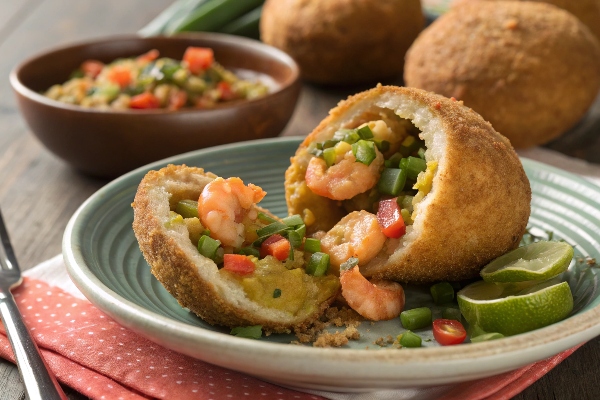
My first encounter with Acarajé proved its standing among the best brasilian food treasures. Crispy on the outside, fluffy on the inside, these fritters epitomize the soulful roots of brazilian traditional food shaped by African influence. Often regarded by locals as a worthy candidate for a brazilian national dish, Acarajé brims with history in every bite. It felt like traveling through time, experiencing the best brasilian food narrative that resonates in Salvador’s vibrant streets, connecting present-day palates to centuries of shared culture.
The robust aroma of black-eyed peas melds with palm oil’s signature nuttiness, delivering a tantalizing first impression. Typically stuffed with spicy shrimp paste, tomato, and onion salad, Acarajé packs a contrast of textures that excites the senses. The crunchy shell yields to a steamy, comforting interior, while a burst of peppery tang cements its bold personality. Eating it roadside, the sound of samba echoing nearby, you sense the lively synergy of African diaspora and Brazilian traditions embodied in this single morsel.
Preparation, Ingredients, Steps
Acarajé demands moderate effort: black-eyed peas must be peeled, soaked, and ground into a smooth paste before mixing with onions and salt. The fritters are then spooned into hot dendê oil until golden. One serving averages about 250 calories, though fillings can raise the count. Deep-frying ensures a crackling exterior, while the budget remains moderate—black-eyed peas are inexpensive, though dendê oil’s cost can vary. Patience and proper technique yield a uniquely crunchy, flavor-packed treat that brims with Afro-Brazilian heritage.
Vatapá – A Luscious Symphony of Bread and Spice
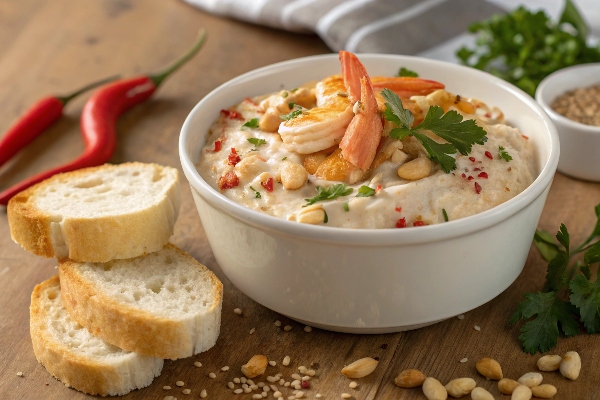
Tasting Vatapá introduced me to another layer of the best brasilian food repertoire. Its silky consistency and unexpected combination of shrimp, bread, and coconut milk exemplify the resourcefulness at the heart of brazilian traditional food. Some argue it deserves recognition as a brazilian national dish, given its widespread presence across the Northeastern coast. I found myself mesmerized by the thick, comforting spoonfuls that epitomize the best brasilian food approach: skillful melding of humble ingredients into something extraordinary and forever memorable.
Vatapá’s creamy base is crafted from stale bread softened in coconut milk, then blended with ground peanuts or cashews. This luxurious puree becomes a canvas for shrimp, palm oil, and a gentle kick of pepper. Every mouthful offers a paradox of subtle sweetness and savory depth, balanced by the nutty aroma that wafts from the bowl. The comforting warmth evokes cozy family gatherings, while the layered flavors spark curiosity about the culinary creativity that gave birth to this distinctly Brazilian sensation.
Preparation, Ingredients, Steps
Preparation leans toward moderate: soak bread in coconut milk, process with nuts, then incorporate sautéed onions, peppers, and shrimp. Stir in palm oil gradually, letting everything meld into a thick, spoonable stew. Calories hover around 550 per serving, influenced by the rich coconut and peanut content. Slow cooking heightens flavor harmony, and the budget remains manageable—bread, peanuts, and onions are affordable staples. With a little patience, Vatapá invites you to explore Brazil’s aromatic tapestry of tastes in one comforting, exotic bowl.
Coxinha – Indulge in Savory Bites of Joy
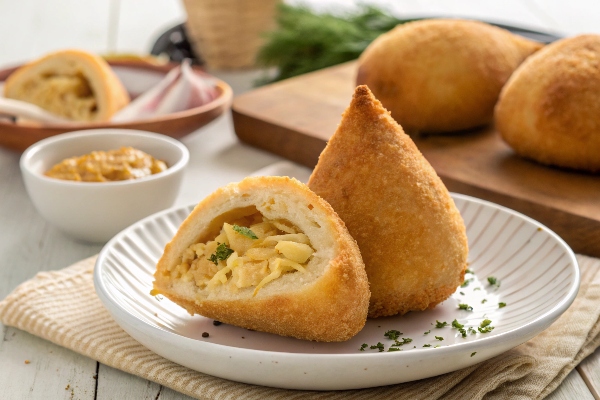
Biting into Coxinha signaled an instant revelation of the best brasilian food phenomenon. Shredded chicken encased in a dough, then breaded and fried, this iconic snack is rooted in brazilian traditional food, cherished at birthday parties and street stalls. It’s often cited as a contender for the brazilian national dish of savory snacks, forging a unique identity across the nation. For me, Coxinha underscores the best brasilian food’s ability to turn simple ingredients into an addictive treat that unites communities in shared delight.
The crisp exterior yields to a mouthwatering interior of seasoned chicken and creamy dough, with every nibble feeling like a mini celebration. Served piping hot, the first crunch resonates with pure comfort. Some prefer a spicy kick, while others relish its mild, buttery taste. Whether enjoyed as a quick bite on the go or showcased in festive gatherings, Coxinha manages to evoke nostalgia for carefree moments. It’s a masterclass in texture—a balance of crunchy shell and velvety filling that never disappoints.
Preparation, Ingredients, Steps
Coxinha is moderate to prepare. The dough consists of chicken stock and flour cooked into a thick paste, enveloping shredded chicken mixed with onions, garlic, and spices. After shaping into a teardrop form, dip in egg wash and breadcrumbs before frying. Expect around 300 calories per piece, depending on size. Achieving the perfect dough consistency is key; the budget stays reasonable since leftover chicken works great. Mastering the shape and fry technique ensures the signature crisp shell and succulent core every time.
Brigadeiro – Brazil’s Sweet Hug in a Bite
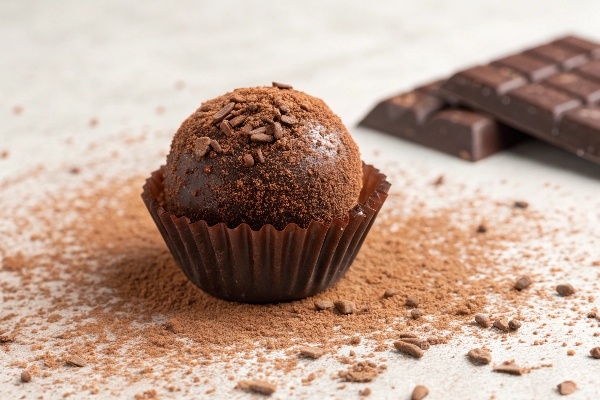
My first taste of Brigadeiro unveiled a softer side of the best brasilian food spectrum—a gooey truffle-like indulgence. Central to brazilian traditional food celebrations, these bite-sized sweets are argued by many to represent a sweet version of a brazilian national dish. Rolling chocolate fudge into sprinkles may seem simple, but it embodies the best brasilian food principle of transforming minimal ingredients into pure bliss. Every pop of flavor felt like a warm hug, reminiscent of childhood nostalgia in every decadent chew.
The texture stands out first: a smooth chocolate center with a delicate chew, rolled in crunchy sprinkles that add a fun contrast. There’s a playful balance between rich cocoa and sweet condensed milk, making each bite luscious but not overwhelming. In Brazil, it’s impossible to picture a party without a platter of Brigadeiros shining under festive lights. Offering them to friends or family is more than a treat—it’s an expression of affection and unity, capturing the essence of celebration in miniature form.
Preparation, Ingredients, Steps
Preparation is fairly easy: simmer condensed milk, cocoa powder, and a bit of butter until thickened, then cool before rolling. Each Brigadeiro carries roughly 70 calories, depending on size. Stirring continuously prevents scorching and ensures a glossy, fudgy texture. Budget is low, as you need only a handful of basic ingredients. Master the timing—too short, and it’s runny; too long, and it’s stiff. Perfectly executed, these sweet morsels become the star of any gathering, enchanting guests with their smooth, melt-in-your-mouth allure.
Pão de Queijo – Cheesy Clouds of Delight

My first batch of Pão de Queijo confirmed that the best brasilian food shines even in the simplest bites. This cheese bread exemplifies the foundational charm of brazilian traditional food, made from tapioca flour and local cheese. Brazilians sometimes joke it should be recognized as a brazilian national dish for breakfast, a testament to its ubiquity. Whenever I sink my teeth into that airy center, I appreciate how it represents the best brasilian food—comforting, innovative, and capable of bringing instant pleasure.
Light as a feather, yet bursting with savory cheese flavor, Pão de Queijo is addictive from the first puff. The crisp golden shell hides a springy, chewy interior that gently yields to each bite. The tapioca flour provides a delightful elasticity, setting it apart from regular wheat-based breads. Enjoyed at dawn with coffee or as a mid-afternoon snack, these mini rolls maintain an irresistible aroma that wafts through kitchens and cafés alike. One taste is enough to spark a craving for more.
Preparation, Ingredients, Steps
Considered easy-to-moderate, Pão de Queijo starts by heating milk, oil, and salt, then mixing in tapioca flour. After cooling slightly, add eggs and grated cheese until a dough forms. Each roll contains around 80 calories. The distinctive chewy texture relies on tapioca, so measuring accurately matters. Budgets remain manageable—commonly used cheeses like Minas or mozzarella fit well. Once you master the balance of consistency and baking time, you’ll pull out trays of delightfully fluffy cheese breads that pair seamlessly with any meal or casual coffee break.
Farofa – The Crunchy Crumble That Completes the Meal
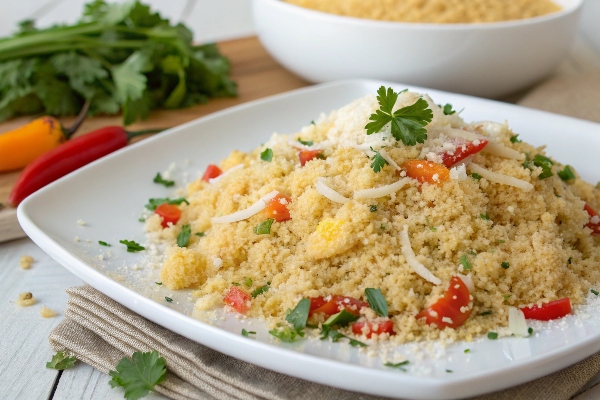
Tasting Farofa for the first time showed me yet another facet of the best brasilian food puzzle. This toasted cassava flour mix is integral to brazilian traditional food, often featured alongside meats, rice, or beans. Some people call it the secret ingredient of a brazilian national dish ensemble, thanks to its ability to add flavor and texture. It epitomizes the best brasilian food’s knack for turning humble staples into culinary heroes, making every plate more tantalizing and bringing families together at the table.
Farofa’s charm lies in its textural contrast. Tiny granules of cassava flour become crispy when sautéed with butter or oil, occasionally joined by bits of bacon, onions, or herbs. Sprinkling it over feijoada or grilled meats adds a pleasant crunch that enriches every bite. The aroma of toasting flour drifts through the kitchen, inviting an appetite that knows something special is coming. There’s a homespun comfort in Farofa, reminding you that small additions can profoundly transform a meal’s overall experience.
Preparation, Ingredients, Steps
Easy to prepare, Farofa requires cassava flour toasted with butter or oil. You can enhance it by adding chopped onions, garlic, or crispy bacon. Calories vary widely—roughly 120 per serving, depending on added fats. Light stirring and attentive heat ensure even browning without burning. Farofa fits any budget, as cassava flour is inexpensive and versatile. Whether served plainly or with extra ingredients, Farofa infuses meals with a crunchy dimension, proving that a seemingly simple side dish can redefine how we savor familiar flavors.
Escondidinho – Layers of Comfort and Surprise
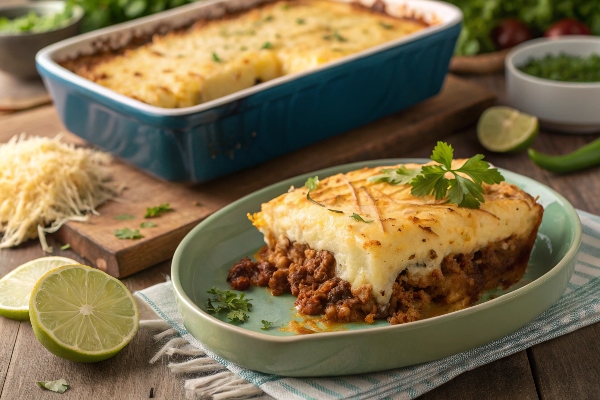
My first forkful of Escondidinho reminded me of the best brasilian food traditions that evoke hearty comfort. This layered casserole of mashed cassava and spiced meat perfectly represents brazilian traditional food’s love for cozy home cooking. Many households even consider it a variation of a brazilian national dish when Sunday gatherings demand something extra comforting. Fork after fork, you uncover succulent filling beneath a golden crust, tasting the warmth of family heritage deeply embedded in each decadent scoop of nostalgia.
Escondidinho’s charm lies in its contrast of textures: a silky mash of cassava or potatoes conceals savory shredded beef or seasoned chicken. The top browns under the oven’s heat, forming a lightly toasted crust that crackles when your fork breaks through. The hearty filling provides a burst of umami, while the starchy blanket balances each bite with creaminess. This interplay of velvety and meaty elements creates a memorable harmony that satisfies both soul and appetite, offering a cozy retreat in edible form.
Preparation, Ingredients, Steps
Preparation sits at a moderate level. Boil cassava or potatoes until tender, mash with butter and milk, then layer atop a savory filling of shredded meat sautéed with onions, garlic, and spices. Bake until golden. One serving runs about 500 calories, depending on cheese additions. Slow cooking or pressure cooking the meat intensifies flavor while staying budget-friendly, as tougher cuts transform into succulent morsels after simmering. The end result is a layered delight, where each scoop reveals comforting flavors that truly underscore Brazil’s love for homestyle feasts.
Quindim – Sunny Custard with a Tropical Twist
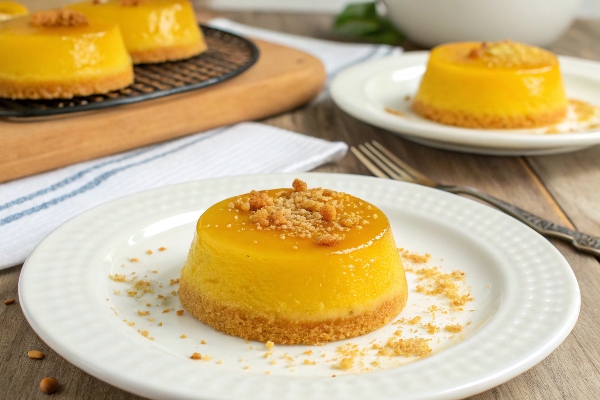
One glance at Quindim’s golden sheen and you’ll suspect it’s part of the best brasilian food repertoire. Crafted from egg yolks, sugar, and coconut, it embodies the tropical flair central to brazilian traditional food. Many recognize it as a sweet take on a brazilian national dish, beloved for its vibrant color and silky texture. The moment that glossy top meets your tongue, you’re transported to a world of sunshine and decadence, confirming Quindim’s rightful place in Brazil’s rich dessert canon.
Cutting into Quindim reveals a custard-like center beneath its glimmering, almost mirror-like surface. The strong coconut undertone enhances its creamy sweetness, resulting in a bright, tropical finish with each spoonful. Bite after bite, the smooth consistency melts on your tongue, leaving a lingering note of caramelized sugar. Although it’s made of simple pantry ingredients, Quindim exudes an aura of sophistication that’s perfect for celebrations or indulgent afternoons. One glance at that sunlit hue, and your palate eagerly anticipates the sweet reveal.
Preparation, Ingredients, Steps
Quindim can be moderately challenging—separating egg yolks and ensuring a smooth texture require precision. Whisk sugar, yolks, and coconut, then let the mixture rest so coconut absorbs moisture. Pour into greased ramekins or a ring mold, bake in a water bath to prevent scorching. Around 250 calories per serving, Quindim demands gentle baking to maintain its soft, silky consistency. Budget-wise, it’s economical given the minimal ingredient list. The secret is patience and careful heat control, yielding a radiant dessert that crowns any meal with its enchanting tropical sweetness.
Conclusion
From the savory depth of Feijoada to the sweet elegance of Quindim, Brazilian cuisine is a celebration of heritage and innovation. Each dish offers a unique story that resonates through every region and generation, linking families and friends around bountiful tables. Their flavors reflect Indigenous, African, and European influences woven into one magnificent tapestry. By embarking on this gastronomic journey, you’ve witnessed how simple, local ingredients transform into soul-stirring feasts. Whether you gravitate toward hearty stews, sizzling cuts of meat, or creamy coconut sweets, there’s a dish calling your name. Embrace Brazil’s culinary spirit and let these timeless creations continue delighting your palate with their comforting warmth and vibrant exuberance.
Beyond mere nourishment, these dishes embody stories of migration, adaptation, and cultural pride. Tasting them invites you to partake in festivities that have echoed across generations. Their colors, aromas, and textures awaken senses dormant in a fast-paced world. Each recipe welcomes improvisation, encouraging cooks everywhere to add personal flair. Perhaps the greatest reward is sharing a meal that transcends borders, allowing even first-time tasters to feel the warmth of Brazil’s kitchen. As you explore further, may your table be filled with the joyful rhythms of this sumptuous culinary legacy.
Having savored these delicious highlights of Brazilian cuisine, the next step is to immerse yourself in the country’s stunning landscapes and vibrant culture. From the sun-kissed beaches to historic colonial towns, every corner resonates with a story waiting to be discovered. Ready to embark on a new adventure? Explore breathtaking vistas, hidden rainforest retreats, and pulsating city life in our next guide—Enchanting Brazil: Unveiling 13 Best Places To Visit: Your Guide to Hidden Gems. Let’s dive into Brazil’s allure beyond the plate.
Which dish is considered the quintessential Brazilian national dish?
Many people consider Feijoada the Brazilian national dish, renowned for its hearty black beans and various cuts of meat. It’s a pillar of best Brasilian food, celebrated for its rich flavor and comforting warmth.
Is Brazilian cuisine suitable for vegetarians or vegans?
While meat features prominently in many brazilian traditional food recipes, there are plenty of plant-based alternatives. Dishes like Moqueca de Palmito (hearts of palm stew) replace seafood with vegetables, and side dishes such as Farofa can be made vegan by omitting bacon or butter.
Where can I find authentic Brazilian ingredients if I live abroad?
Many international grocery stores stock essentials like cassava flour, coconut milk, and black beans. Online retailers and Brazilian specialty shops also offer condiments like dendê oil, ensuring you have everything needed to recreate best Brasilian food dishes at home.
What makes Brazilian barbecue (Churrasco) distinctive?
Churrasco highlights quality cuts of meat like Picanha, grilled using simple seasonings (often just salt) over open flame. This technique locks in juiciness and flavor, setting it apart from other grilling styles. It’s a cherished aspect of brazilian national dish culture, especially during festive gatherings.
Are Brazilian desserts overly sweet?
Brazilian sweets like Brigadeiro and Quindim can be rich and sugary, but that’s part of their charm. Balancing them with a cup of coffee or enjoying smaller servings makes them an indulgence worth savoring. They showcase the sweet side of brazilian traditional food while offering a delightful ending to any meal.

